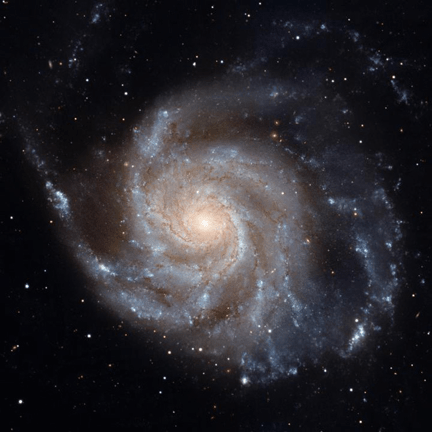What you and the Milky Way have in common
Published 7:15 am Saturday, August 5, 2017

- Content That Works
Half of all Milky Way matter – including us – came from galaxies far, far away.
Powerful intergalactic winds carrying matter from the gaseous explosions of massive dying stars are responsible for up to half the mass in the Milky Way, including the atoms of our solar system, the Earth and even our own bodies, scientists now say.
This intergalactic transfer, a major, unexpected phenomenon described for the first time by astrophysicists at Northwestern University using supercomputer simulations, will be critical to understanding how galaxies evolve.
“Given how much of the matter out of which we formed may have come from other galaxies, we could consider ourselves space travelers or extragalactic immigrants,” said Daniel Anglés-Alcázar, postdoctoral fellow at CIERA, Northwestern’s astrophysics center, who led the study. “It is likely that much of the Milky Way’s matter was in other galaxies before it was kicked out by a powerful wind, traveled across intergalactic space and eventually found its new home in the Milky Way.”
Winds from supernovae, or explosions of stars, reach speeds of up to thousands of kilometers per second, blowing gas and matter from one galaxy across space for billions of years into new galaxies.
The intergalactic matter in our solar system came from other galaxies up to one million light years away, said Claude-André Faucher-Giguère, a co-author of the study and assistant professor of physics and astronomy in the Weinberg College of Arts and Sciences.
“This study transforms out understanding of how galaxies formed from the Big Bang,” he said.
Watch an animation of gas flowing during the formation of a Milky Way-like galaxy (the face-on view of the explosion appears on the left; the edge-on view is on the right):
The researchers used computer code to produce models of galaxies and algorithms to quantify how they acquired matter from the Big Bang to the present day. The study required the equivalent of several million hours of continuous computing.
The scientists tracked the complex flow of matter in the computer simulations and found that gas flows from smaller galaxies to bigger ones, such as the Milky Way, where the gas forms stars.
They were able to determine if a star formed from matter present endemic to the galaxy itself, or if it formed from matter that had been contained in another galaxy. They determined the transfer of mass through galactic winds accounts for up to 50 percent of matter in the larger galaxies.
“Our origins are much less local than we previously thought,” said Faucher-Giguère. “This study gives us a sense of how things around us are connected to distant objects in the sky.”
The Northwestern team will continue to research and test the new theory of galaxy formation, collaborating with observational astronomers working with the Hubble Space Telescope and ground-based observatories.
© Content That Works





